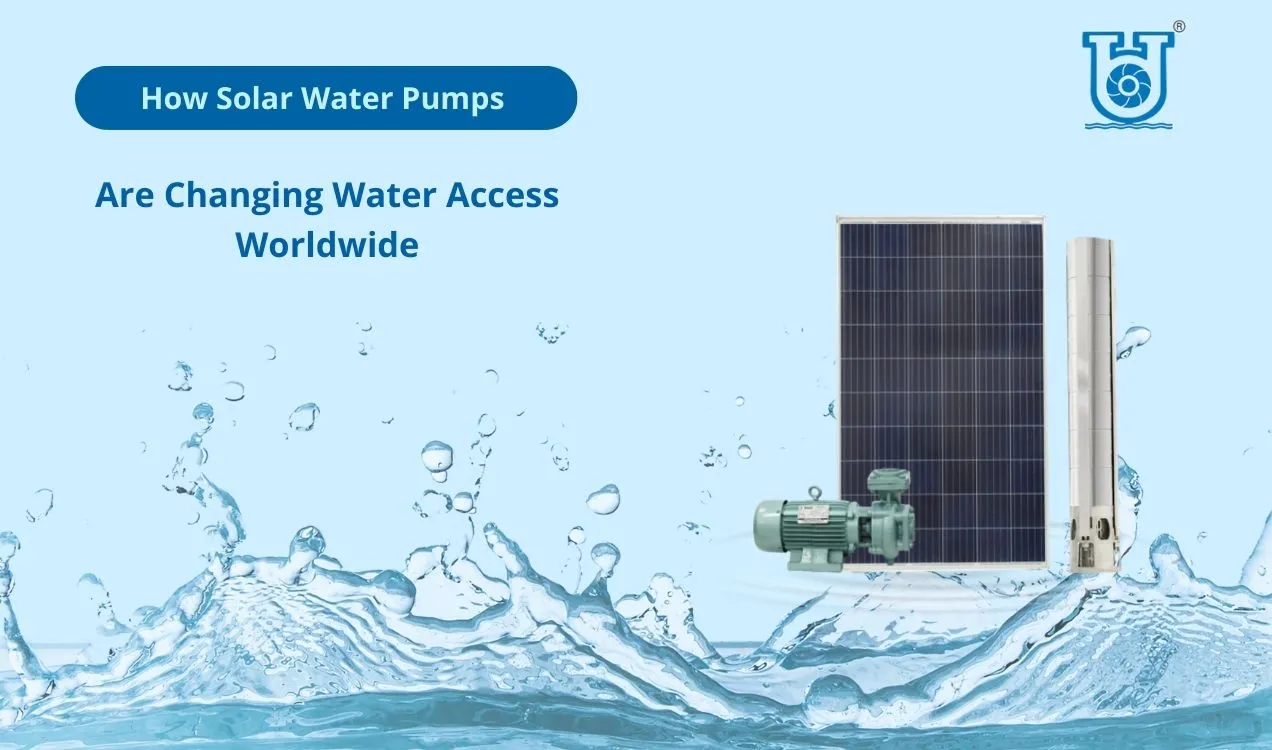Solar water pumps are making clean water more accessible to people worldwide, especially in remote areas and regions without electricity. These innovative devices address urgent water needs by using solar energy, providing a reliable, long-lasting, and affordable way to pump and distribute water.
Providing Clean Water Access in Rural Regions
Solar water pumps can provide clean water to rural populations that were previously inaccessible. In areas with inconsistent or no grid energy, solar-powered pumps offer a practical solution, ensuring a steady supply of water. This technology has been particularly revolutionary in Sub-Saharan Africa, significantly increasing the water supply for livestock, irrigation, and drinking.
In India, traditional diesel-powered pumps have been replaced by solar water pumps. Recognizing the potential of this technology, the Indian government has initiated programs to help farmers purchase solar pumps. This has improved irrigation water supply, reduced dependence on unpredictable rainfall, and allowed farmers to grow crops year-round.
Economical and Environmental
Solar water pumps are cost-effective and require minimal maintenance, making them an attractive choice for resource-scarce areas. Once installed, these pumps do not require fuel, leading to long-term cost savings compared to traditional diesel pumps.
Moreover, using solar-powered pumps reduces greenhouse gas emissions and reliance on fossil fuels, promoting an environmentally friendly and socially beneficial water delivery system. In regions with high solar irradiation, like East Africa, solar water pumps have become a sustainable solution, lowering carbon footprints and encouraging the use of renewable energy.
Advantages in Health and Sanitation
Keeping up health and hygiene requires having access to clean water. Lack of safe drinking water in many underdeveloped areas causes waterborne illnesses like typhoid, dysentery, and cholera spread. By ensuring the availability of clean and safe water for cooking, drinking, and personal hygiene, solar water pumps greatly lower the prevalence of these illnesses in communities. Furthermore, better sanitation procedures are supported by increased water availability and are crucial for the general health of people worldwide.
Raising Agricultural Productivity
Solar water pumps have greatly impacted rural agricultural productivity. These technologies provide reliable irrigation, allowing farmers to increase crop yields and improve their quality of life. The installation of solar-powered pumps in isolated regions has boosted agricultural production and reduced the need for physical labor.
For instance, in Kenya, solar water pumps have enabled farmers to grow multiple crops each year, significantly increasing their income. This technology has also been crucial in areas affected by climate change, where traditional water sources have become unreliable. Solar pumps help farmers protect their crops and adapt to changing weather patterns by ensuring a constant water supply.
Opportunities and Future Innovations
As solar water pump technology evolves, further improvements in efficiency, durability, and water flow are expected. Innovations like advanced monitoring systems, more efficient solar panels, and improved pump designs will enhance performance. Solar tracking systems, which adjust panels to optimize energy collection, could make solar water pumps even more efficient.
Combining energy storage devices with solar-powered pumps can address the issue of water supply during low sunshine hours. Lithium-ion batteries and other advanced storage technologies store excess energy, ensuring a steady water supply around the clock. This is particularly important in regions with unpredictable weather.
Governments and organizations are providing financial support and regulatory frameworks to promote the use of solar water pumps. Grants, subsidies, and incentives make it easier for communities and organizations to invest in these systems. For example, the International Solar Alliance (ISA) facilitates access to affordable financing and technical support, encouraging the adoption of solar water pumps.
International organizations like the World Bank and the UN are actively supporting initiatives that include solar water pumps to increase water availability in underdeveloped countries. These initiatives aim to make water and sanitation clean and affordable and to promote the use of clean and renewable energy.
Case Studies & Success Tales
Numerous case studies highlight the transformative impact of solar water pumps in local communities worldwide. In Ethiopia’s Somali region, the installation of solar water pumps has increased water availability for livestock and human use, reducing the distance women and children must travel to fetch water and improving community health.
In Nepal, solar water pumps have been used to irrigate terraced fields in hilly areas where traditional irrigation methods are challenging. This technology has boosted agricultural productivity and improved the livelihoods of smallholder farmers.
In isolated parts of Mexico, solar water pumps provide indigenous communities with a reliable water supply. These projects have not only improved water availability but also empowered communities to manage their local water resources.
Conclusion
Implementing solar water pumps is a transformative approach to ensuring a sustainable water supply. By harnessing solar energy, these systems provide a reliable and cost-effective solution, especially in remote and off-grid areas. In regions like Sub-Saharan Africa and India, solar water pumps have significantly increased water availability for drinking, irrigation, and livestock, thereby improving health and agricultural productivity. Economically, they reduce fuel and long-term operating costs, and environmentally, they cut greenhouse gas emissions and dependence on fossil fuels.
With continued financial support from governments and organizations and ongoing technological advancements, solar water pumps are becoming more accessible despite their higher initial costs. Case studies from Ethiopia, Nepal, and Mexico demonstrate the substantial benefits—improved health outcomes, increased agricultural productivity, and community empowerment. The global adoption of solar water pumps is crucial for improving quality of life and promoting sustainable development.


